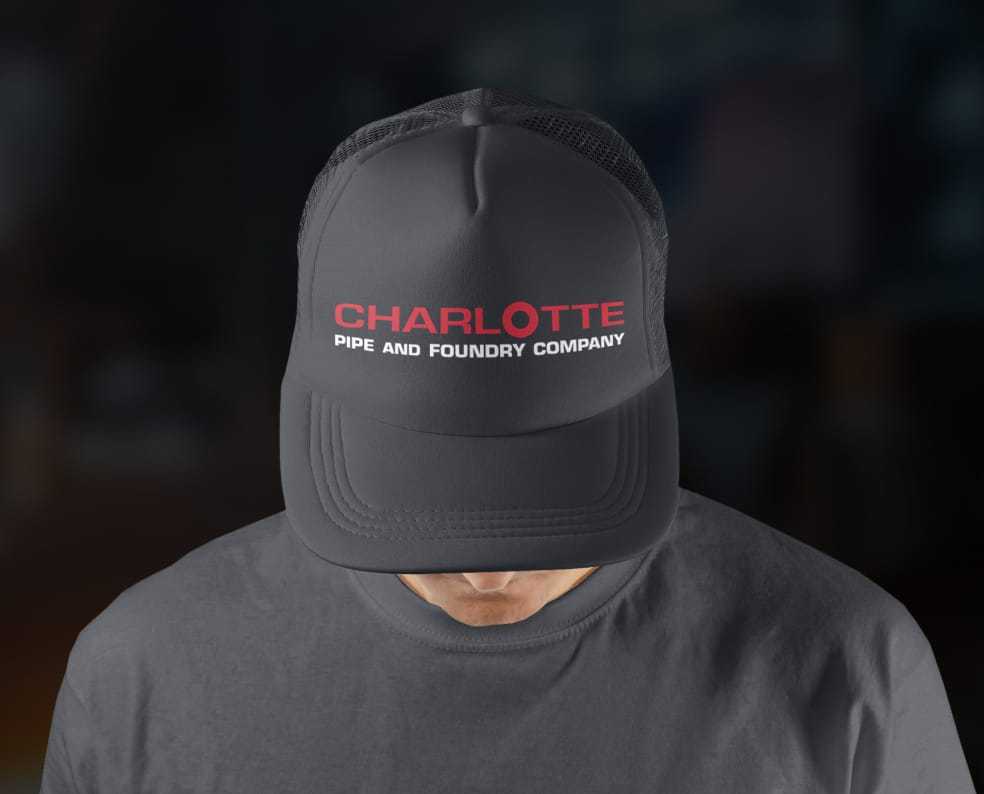Article
How Electrocoating Cast Iron Soil Pipe Improves Performance
In the 1890s, cast iron soil pipe emerged as the plumbing pipe material of choice in the United States. The term “soil pipe” was adopted and used to describe the functional purpose — removing soiled effluents (waste) from a building — of this key plumbing system component.
As plumbing systems became more complex throughout the 20th century, cast iron soil pipe offered significant benefits that made it indispensable in various industrial and sanitary applications.
At a high level, the benefits of cast iron soil pipe include:
- Chemical stability
- Corrosion resistance
- High-temperature tolerance
- Mechanical strength
- Noise reduction
Today, there are numerous cast iron soil pipe options available in the U.S. These include Charlotte Pipe and Foundry’s Edge HP Iron pipe and fittings system, a specially electrocoated cast iron designed for aggressive drain, waste, and vent applications. These modern soil pipe systems are now relied on to convey an increasing amount of aggressive waste.
Factors affecting the performance of soil pipe systems include:
- Stronger cleaning products, which are commonly used by hospitals, schools, and other institutions, often with less dilution
- COVID-19, which drove an increase in the use of hand sanitizer and, subsequently, a decrease in handwashing with soap and water
- Low-flow water fixtures, which can greatly reduce the amount of clean water used to flush the drainage system
- The food service industry, which often uses undersized or improperly maintained grease interceptors, resulting in hydrogen sulfide gas buildup
So, while the cast iron pipe itself has not changed much over the years, the effluent being introduced into the soil pipe has changed dramatically.
New Requirements Call for a New Approach to Cast Iron Soil Pipe
Modern cast iron soil pipe systems are required to convey effluents with a pH of anywhere from 2 to 12. Yet traditional cast iron can handle a pH of 4.3 to 10.
As a result, some engineers and facility operators have moved away from traditional cast iron soil pipe in favor of other DWV piping materials, resulting in more frequent specifications of PVC, CPVC, and stainless steel.
“While these alternatives are effective in some applications, they also have drawbacks, including limited temperature capability, susceptibility to chemical attack, and dramatically increased material costs,” said Paul Tully, a field technical service representative at Charlotte Pipe and Foundry.
Because of these potential flaws, the most recent soil pipe solution gaining popularity features a coated cast iron soil pipe.
Coated cast iron soil pipe products offer all the benefits of traditional cast iron while negating the major drawback of cast iron in aggressive sanitary applications: corrosion.
An Enhanced Coating Method to Help Fight Corrosion
Coated cast iron soil pipe products offer all the benefits of traditional cast iron while negating the major drawback of cast iron in aggressive sanitary applications: corrosion.
While the coating provides corrosion protection, that protection is only effective if the coating remains on the pipe. If the coating is susceptible to peeling, chipping, or flaking from snap cutting, handling on jobsites, or mechanical cleaning, it can become ineffective very quickly.
Once the coating is compromised, the aggressive effluents are in direct contact with the bare metal and corrosion occurs. The corrosion will then propagate throughout the pipe as the effluent gets under the coating, exacerbating the problem.
Thus, the coating itself is not the most important factor in protecting the iron from the corrosive environment. Instead, the effectiveness of the protection is based on how the coating is applied.
As a result, before selecting an enhanced coated product, it is important to consider the coating application process.
Enhanced coated cast iron soil pipe products are all made to existing cast iron soil pipe manufacturing standards used in the United States:
- ASTM A74 for service and extra-heavy cast iron
- CISPI 301 or ASTM A888 for hubless (no hub) cast iron
“The standards have vague requirements for coatings — in essence, they require coatings to be ‘suitable for the purpose’ and applied evenly,” said Tully. “These general requirements have worked well on traditional cast iron soil pipe for decades; however, with the necessity for a high-performance coating in aggressive DWV applications, many manufacturers have sought out more rigorous coating requirements to ensure adequate performance.”
All the enhanced coated cast iron soil pipe products offered in the U.S. have used a European standard: EN 877, Cast iron pipes and fittings, their joints and accessories for the evacuation of water from buildings — Requirements, test methods and quality assurance. This standard provides a specification for the coating performance by offering a quantifiable method to determine the quality of the coating and coating application.
Exploring the Cast Iron Coating Process
When coating a pipe, surface preparation to the interior and/or exterior of the pipe is crucial for proper adhesion and performance. Many manufacturers use a special slurry in the pipe-casting process, which makes the pipe’s outside diameter more receptive to the coating. Next, all manufacturers ream the interior of the pipe one or two times.
After surface prep, two basic coating application processes are used:
- Spray-on coating: The more common approach, this process entails applying one or two coats of either an epoxy or a urethane coating on the interior of the pipe. (If the exterior of the pipe is coated as well, it is applied in a separate step.) In this process, the coating is mechanically joined with the metal. To work properly, the pipe must have a 4- to 6-mil anchor pattern and be free of debris before spraying on the coating.
- Electrocoating: This coating method is a much more sophisticated, multistage process, where the iron is first rinsed and then coated with zinc phosphate, a corrosion inhibitor. Then the pipe receives an electrical charge, and the coating receives the opposite charge. Through a series of immersion tanks, the coating is microlayered until it achieves a certain specification. Last, the polarities of the metal and coating are reversed, and the process is repeated.
Charlotte Pipe’s Edge HP Iron family of cast iron products uses the electrocoating process. This provides a uniform coating thickness and superior corrosion resistance for aggressive applications and installations, such as:
- Bar sinks
- Casinos
- Commercial kitchens
- Hospitals
- Parking garages
- Soda fountains
“The benefit of using the electrocoating process is that because the coating is fusion bonded to the metal — versus mechanically bonded — it will never chip, flake, or delaminate,” said Tully. “This technology has been used in the automotive industry for decades due to the effectiveness of protecting metal parts.”
For fittings, there are also two basic methods for coating application:
- The more common application process is to mechanically bond the coating to the fitting by an immersion (dip) or spray-on process. (Unlike the pipe coating process, no special fitting preparation is employed.)
- The other method for enhanced coated fittings involves both electrocoating and a powder topcoat. While fittings are not reamed like pipe, they are cleansed in an immersion tank and receive a zinc phosphate layer. The fittings and coating are then charged with opposite electrical charges. Finally, a powder topcoat is applied as an additional layer of protection.
The benefit of using the electrocoating process is that because the coating is fusion bonded to the metal — versus mechanically bonded — it will never chip, flake, or delaminate. Paul Tully Field Technical Representative
Protecting Field-Cut Pipe Ends
While considerable effort is made to properly prepare and coat a cast iron soil pipe during the manufacturing process, once the pipe is cut in the field, it exposes the uncoated ends to the effluent flowing through the piping system. In this scenario, the pipe stops that are incorporated into the neoprene fluid seals provide a limited degree of protection from the aggressive effluents.
While manufacturers of spray-on coated pipe often require a solution to protect the cut end (to ensure the pipe coating remains intact), Charlotte Pipe’s electrocoated Edge HP Iron pipe does not require cut ends to be coated.
“Charlotte Pipe’s advanced electrocoating process ensures that the effluent will not get under the coating and cause any delamination of the coating,” said Tully. “However, when an on-site coating of the cut edges is desired or specified, we recommend using PPG MULTIPRIME® for edge protection.”
Mechanical Cleaning
As with any sanitary system, solids can build up or clog drainage lines. Typically, clearing these lines requires the use of mechanical devices, such as augers or snakeheads. While the cutters on these devices are intended to break up solids and move them downstream, they can also remove the interior coating on the pipe and fittings.
This dynamic showcases another benefit of the electrocoating process. While spray-on coatings that rely on mechanical adhesion are apt to chip off with repeated passes of these clog-clearing devices, a coating that is electrically fused to the metal performs much better with mechanical cleaning.
With electrocoated pipe and fittings — such as Edge HP Iron — delamination is a nonfactor. In effect, since the coating is permanently bonded to the metal, the only way to remove the coating is to take away metal from the pipe wall.
“Considering that cast iron soil pipe and fittings are typically installed below the slab or other hard-to-access locations, material selection is critical,” said Tully. “While both spray-on coating and electrocoating applications provide excellent protection, it’s important to remember that protection is only effective as long as the coating remains on the cast iron. And that’s where we see the benefits of Edge HP Iron rise above the competition.”
Download the Edge HP Iron product brochure for more information. For local support and resources, we encourage you to find a Charlotte Pipe sales representative near you.



